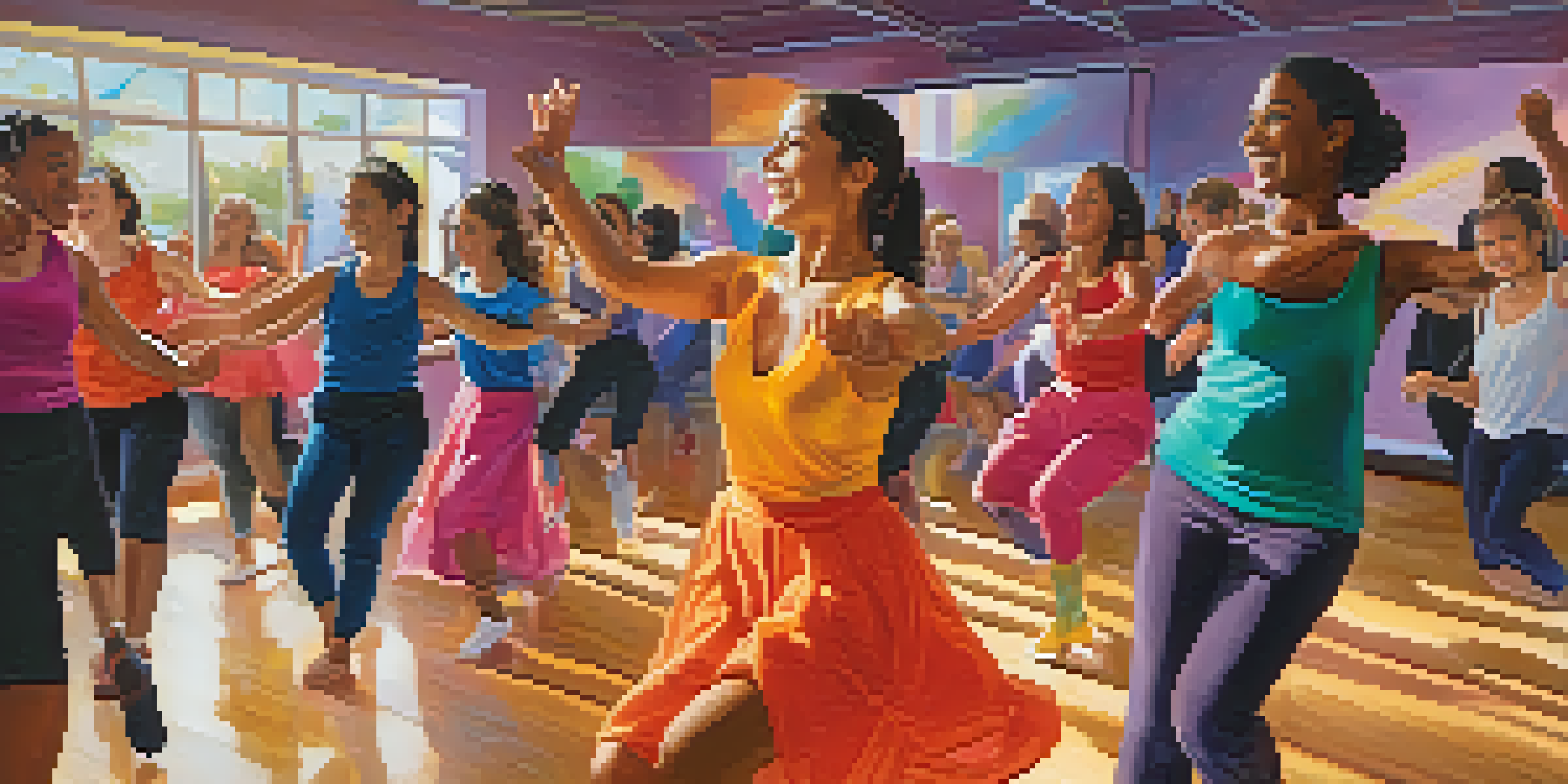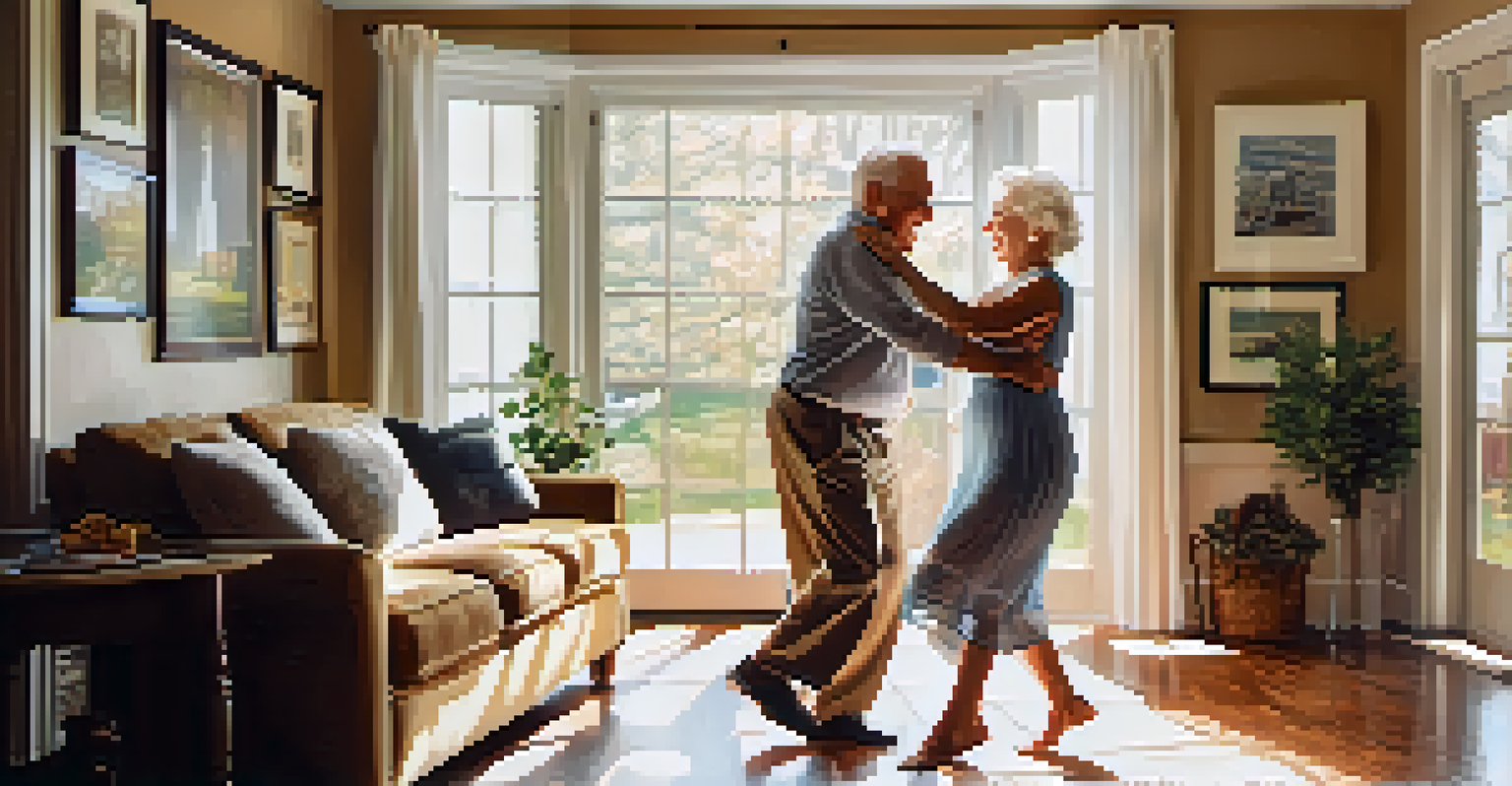The Role of Dance in Enhancing Coordination and Motor Skills

Understanding Coordination and Motor Skills
Coordination refers to the ability to use different parts of the body together smoothly and efficiently. This skill is essential not just for athletes, but for everyone in daily activities. Motor skills, on the other hand, are the movements we make using our muscles—both fine motor skills (like writing) and gross motor skills (like jumping). Together, these skills form the foundation for physical activity and everyday tasks.
Dance is the hidden language of the soul.
Many people may not realize that coordination and motor skills are interconnected. For instance, when you dance, you're not just moving your feet; you're also engaging your arms, core, and even your facial expressions. This holistic engagement helps to strengthen neural connections in the brain, improving overall coordination. The more you dance, the better you become at moving in sync with your body.
In essence, a solid understanding of coordination and motor skills is vital for exploring how dance can be a transformative tool. It’s not just about rhythm or expression—it's about honing your body's ability to move with grace and precision. This foundation sets the stage for how dance can enhance these skills further.
How Dance Improves Coordination
Dance requires precise movements and timing, which are critical components of coordination. Whether it's a ballet pirouette or a hip-hop groove, each dance style demands a unique set of movements that challenge the body's ability to coordinate. As dancers practice, they learn to integrate their movements, making their physical responses more fluid and natural.

For example, consider a salsa dancer who needs to maintain balance while executing quick footwork and body movements. This not only enhances their coordination but also teaches them how to adjust their movements in response to music and their partner's actions. With each dance session, they develop a better sense of body awareness and spatial orientation.
Dance Enhances Coordination Skills
Dance requires precise movements that improve coordination by integrating various body parts in rhythm and timing.
Ultimately, the repetitive nature of dance practice reinforces these coordination skills. Just as a musician refines their technique through practice, dancers become more adept at coordinating their movements over time. This skill transfer goes beyond the dance floor, positively affecting everyday activities like sports, driving, or even simple tasks like walking.
Motor Skill Development Through Dance
Dance is an excellent way to develop both fine and gross motor skills. When dancers perform, they engage in a variety of movements that require muscle control, strength, and precision. For instance, executing a quick turn in a contemporary dance piece engages core muscles while requiring precise foot placement, which strengthens gross motor skills.
The body says what words cannot.
On the other hand, styles like jazz dance often involve intricate hand movements and facial expressions, fostering fine motor skills. These small, controlled movements help improve dexterity and coordination in everyday tasks. Dance encourages the body to learn and adapt, making it an effective tool for motor skill enhancement.
As dancers progress in their training, they often notice improvements not just in their dance abilities but also in other physical activities. This cross-training effect illustrates how engaging in dance can create a ripple effect, enhancing overall motor skills and making everyday movements easier and more efficient.
Dance and Cognitive Development
Interestingly, the benefits of dance extend beyond physical skills to cognitive development. Engaging in dance requires focus and concentration, as dancers must remember choreography while maintaining rhythm and coordination. This mental engagement enhances brain activity, which can lead to improved cognitive functions over time.
Moreover, learning new dance routines challenges the brain to adapt and grow. Each time a dancer picks up a new style or sequence, they are essentially training their brain to process new information and improve memory. This interplay between physical movement and cognitive challenge boosts neural connectivity, leading to sharper mental acuity.
Motor Skills Develop Through Dance
Engaging in dance fosters both fine and gross motor skills by encouraging muscle control and precise movements.
In this way, dance becomes a two-for-one deal: you're not only enhancing your physical abilities but also giving your brain a workout. This dual benefit makes dance a compelling choice for individuals of all ages looking to improve their overall coordination and motor skills.
Dance as a Therapeutic Tool
Dance therapy has gained recognition for its ability to enhance coordination and motor skills, particularly in individuals with disabilities or developmental delays. Through dance, therapists can create tailored programs that focus on improving physical abilities while also promoting emotional well-being. This holistic approach makes dance a powerful therapeutic tool.
For instance, children with autism may find that structured dance activities help them improve their coordination while also providing a safe space for self-expression. The rhythm and structure of dance can make it easier for them to engage socially and physically, leading to improvements in both motor skills and social interactions.
Furthermore, dance therapy isn't limited to children. Adults recovering from injuries or surgeries can also benefit from dance as a form of rehabilitation. It encourages movement in a fun and engaging way, making the recovery process feel less daunting while promoting physical healing and coordination.
Dance Across Different Age Groups
Dance is a versatile activity that can be adapted for individuals of all ages, making it an ideal way to enhance coordination and motor skills throughout life. For young children, dance classes often introduce basic movement patterns that help establish foundational motor skills, setting the stage for future physical activities. It’s a fun way for kids to learn coordination without even realizing they're working on it.
For teens and adults, dance offers a social outlet that combines fitness with creativity. Classes like Zumba or hip-hop not only improve coordination through dynamic movements but also promote a sense of community. Engaging with others while learning new dance styles can motivate individuals to stay active and improve their skills together.
Dance Boosts Cognitive Function
The mental engagement involved in learning dance routines enhances cognitive abilities and memory through physical movement.
Even seniors can benefit from dance, as many programs are designed to enhance mobility and coordination in a gentle, enjoyable way. Dance offers a low-impact way for older adults to maintain their physical health while also socializing, proving that it's never too late to reap the rewards of dancing.
Incorporating Dance into Daily Life
Incorporating dance into daily routines can be both fun and beneficial for coordination and motor skills. Whether it's a short dance break during work, a family dance party at home, or joining a local dance class, there are many ways to make dance a regular part of life. This not only keeps you active but also fosters a love for movement.
Consider setting aside time for a daily dance session, even if it's just for a few minutes. You could follow along with an online dance tutorial or blast your favorite music and dance freely. This practice encourages spontaneity and joy, which can significantly enhance your overall well-being while sharpening your coordination skills.

Moreover, engaging in dance as a family or with friends adds a social element that makes it even more enjoyable. Dancing together creates shared experiences that strengthen bonds while improving physical coordination and motor skills. So, put on your dancing shoes and get moving—your body and mind will thank you!